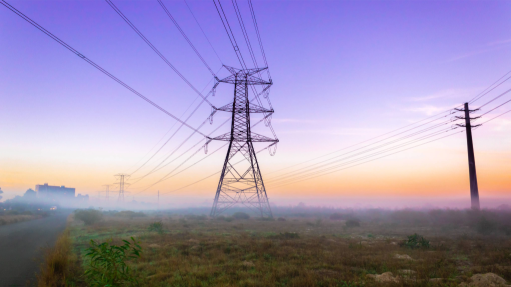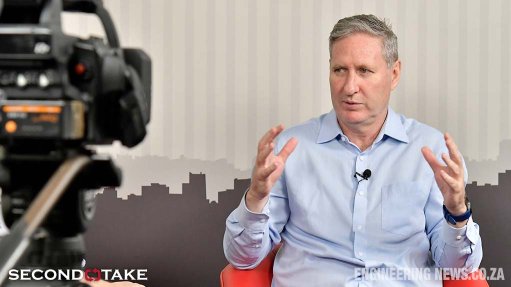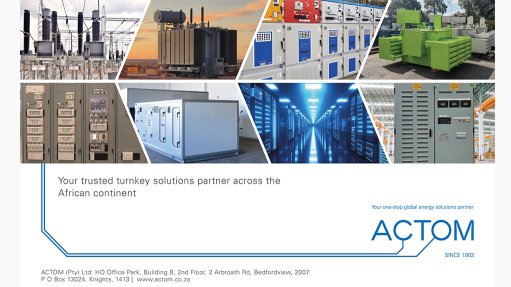Opinion: How South Africa could seize the moment and build renewables and battery value chains
The draft South African Renewable Energy Masterplan (SAREM) has been released for public comment. In this article, Gaylor Montmasson-Clair, who is a facilitator of the SAREM process, outlines the importance of policy in creating the anchor demand that is required for a successful industrialisation drive in renewables and battery value chains.
R135-billion. This is the amount of solar panels (R31-billion), lithium-ion batteries (R22-billion), wind turbines (R30-billion) and inverters (R52-billion) imported by South Africa over the 2010 to 2022 period. Yet, South Africa has noteworthy manufacturing capabilities in the renewable energy and battery storage value chains. And market demand is booming. This points to a key industrial development opportunity for the country – the kind that only presents itself once in a century or so.
To date, the development of South Africa’s industrial capacity in renewable energy and battery storage has been stifled by a series of challenges. Market demand has historically been concentrated, almost entirely, on the Renewable Energy Independent Power Producer Procurement Programme (REIPPPP), the country’s public procurement of utility-scale generation capacity. Since 2015, the stop-start nature of the procurement, combined with local content rules often out of sync with market dynamics, and a lack of policy consistency, has not supported the development and growth of domestic industrial capacity.
The market is shifting, however. Public procurement is more diverse, with many national departments, provinces, municipalities and State-owned enterprises procuring their own power, in addition to the commissioning of utility-scale renewable energy and battery storage systems. Regulatory reforms (along with tax incentives) have unlocked the private sector market since mid-2021, triggering a massive pipeline of large-scale projects. Small-scale embedded generation (SSEG) installations, i.e. rooftop solar and battery systems, are also rising significantly in the country, driven by grid electricity price increases, energy security concerns and government support - SSEG is increasingly enabled and, in some cases, incentivised, by municipalities.
Will this exponential demand underpin the development of domestic value chains or lead to a further flood of imports? This is where policy matters.
Combined with broad industrial capabilities in connected or related value chains (such as steel, aluminium, capital equipment and electro-technical equipment), the economy displays wide-ranging domestic capacity in supplying the renewable energy and storage sector. The balance of plants (civil and electrical works) is almost entirely localised. Across technologies, domestic capabilities also exist in the manufacturing of (centralised) inverters, cables, transformers as well as numerous services (such as yield assessment and advisory services). Some solar mounting structures, trackers and panels are made locally. So are both steel and concrete wind towers. Blades used to be made in the country as well. The lithium-ion battery value chain is, apart from battery cells, well developed, with some capabilities in mineral beneficiation (e.g. manganese sulphate), casing, assembly and electrical systems (including battery and energy management systems). The vanadium-based battery value chain, although nascent domestically, also boasts material local capabilities, including vanadium mining and refining, electrolyte production and battery assembly. And many other opportunities are currently at exploratory stages, from wafers and ingots (for solar panels), to battery cells, to end-of-life management (reuse, remanufacturing and recycling).
How do we turn these existing capabilities into a fully-fledged value chain able to meet local demand and tap into export markets?
First, any successful industrialisation drive has to be underpinned by substantial anchor demand, i.e. the local market in this case. Existing and prospective manufacturers need a robust view of the upcoming market demand in the country to inform investment decisions. That means urgently addressing issues related to both the physical (i.e. transmission and distribution networks) and market infrastructure (i.e. tariffs, licensing, registration, wheeling, trading, power exchange), so that latent demand translates into effective demand. New market segments must also be unlocked – domestically and abroad, particularly on the African continent.
Then, green industrial strategy support for local value chains, through tax incentives, trade measures, industrial financing, site development, technological support, skills development and accreditation and testing, is essential. This package of measures, which already exists within the state, can be pivoted to the renewable energy and battery storage sector (or greentech more broadly). This would contribute to fostering demand for locally-made goods and services as well as improving the competitiveness of domestic suppliers on both the domestic and export markets.
At the core, public policy related to renewable energy and storage must be aligned with localisation objectives. Public procurement programmes from all spheres of government and organs of state, as well as government support programmes (such as incentives, subsidies and funding schemes) must integrate localisation objectives in their design. This should follow a clear, realistic (yet ambitious) localisation ‘ramping curve’. Ideally, private sector procurement should adopt a similar trajectory.
Besides this anchor demand support, supply-side interventions are necessary in South Africa to decisively bolster investment in the sector. Significant packages to support building their industrial capacity have been announced by the US, the European Union (EU), China and many other jurisdictions. While a set of cross-cutting measures provides a degree of support to existing and prospective manufacturers in the country, dedicated policy support for ‘greentech’ manufacturing value chains, through a targeted incentive, is required. The section 12i tax allowance, which incentivised brownfield and greenfield manufacturing investment until recently, should be re-activated with a focus on green manufacturing. Targeted duty relaxation/exemption or protection, where appropriate, could further support the growth of particular industries, such as solar panels, mounting structures or lithium-ion batteries. Similarly, harnessing existing trade relationships would provide opportunities for regional integration, through the African Continental Free Trade Area and the Southern African Development Community (SADC), and broader market access, through the SADC-EU Economic Partnership Agreement, the US African Growth and Opportunity Act and the BRICS group.
Importantly, dedicated support, in the form of capital provision, but also guarantees and warrantees, and business services (such as factory space, machinery, tools and testing facilities), is paramount to facilitate the integration of new entrants into the various stages of the renewable energy and storage value chain and bolster existing supplier development and entrepreneurship support programmes. Strategic partnerships between innovators and end-users, facilitated by match-making platforms, and underpinned by innovative funding models to de-risk trials, would further drive the penetration of innovative solutions in the country. This is critical for South Africa to be technology ready and remain abreast of rapid technological innovations defining the sector.
In addition, the broader ecosystem must enable industrial investment. Support for energy security in industrial parks, with reliable, affordable and low-carbon electricity supply, would address the single largest supply-side constraint on the development of industrial capacity. The full suite of benefits promulgated for Special Economic Zones, if implemented, would also support investment, particularly for export-orientated industries. Complementarily, the launch of InvestSA’s One Stop Shop, aimed at providing investors with services to fast-track projects and reduce red tape, would improve the ease of doing business. Establishing certification facilities (for batteries but also solar panels and inverters) would prevent manufacturers from having to obtain, at great cost, certifications overseas. Moreover, the availability of skilled professionals is rapidly becoming a bottleneck. Establishing a more structured pipeline, from mapping to building and activating skills, would go a long way in improving the quantity and quality of qualifications in the sector and the availability of skilled people in the country.
The development of the SAREM, initiated by the Department of Mineral Resources and Energy and the Department of Trade, Industry and Competition, aims to seize the moment and put in place the necessary frameworks to drive the industrial and inclusive development of renewable energy and battery storage value chains in the country. The draft plan, driven by the leadership and contributions of government, labour unions, industry players and community representatives, is out for public comment. Have your say and contribute to its finalisation. Whether or not South Africa harnesses the boom in renewable energy and battery systems to drive inclusive and industrial development depends on it.
Montmasson-Clair is a Senior Economist at Trade & Industrial Policy Strategies (TIPS) and the facilitator of the SAREM process.
Comments
Press Office
Announcements
What's On
Subscribe to improve your user experience...
Option 1 (equivalent of R125 a month):
Receive a weekly copy of Creamer Media's Engineering News & Mining Weekly magazine
(print copy for those in South Africa and e-magazine for those outside of South Africa)
Receive daily email newsletters
Access to full search results
Access archive of magazine back copies
Access to Projects in Progress
Access to ONE Research Report of your choice in PDF format
Option 2 (equivalent of R375 a month):
All benefits from Option 1
PLUS
Access to Creamer Media's Research Channel Africa for ALL Research Reports, in PDF format, on various industrial and mining sectors
including Electricity; Water; Energy Transition; Hydrogen; Roads, Rail and Ports; Coal; Gold; Platinum; Battery Metals; etc.
Already a subscriber?
Forgotten your password?
Receive weekly copy of Creamer Media's Engineering News & Mining Weekly magazine (print copy for those in South Africa and e-magazine for those outside of South Africa)
➕
Recieve daily email newsletters
➕
Access to full search results
➕
Access archive of magazine back copies
➕
Access to Projects in Progress
➕
Access to ONE Research Report of your choice in PDF format
RESEARCH CHANNEL AFRICA
R4500 (equivalent of R375 a month)
SUBSCRIBEAll benefits from Option 1
➕
Access to Creamer Media's Research Channel Africa for ALL Research Reports on various industrial and mining sectors, in PDF format, including on:
Electricity
➕
Water
➕
Energy Transition
➕
Hydrogen
➕
Roads, Rail and Ports
➕
Coal
➕
Gold
➕
Platinum
➕
Battery Metals
➕
etc.
Receive all benefits from Option 1 or Option 2 delivered to numerous people at your company
➕
Multiple User names and Passwords for simultaneous log-ins
➕
Intranet integration access to all in your organisation



















